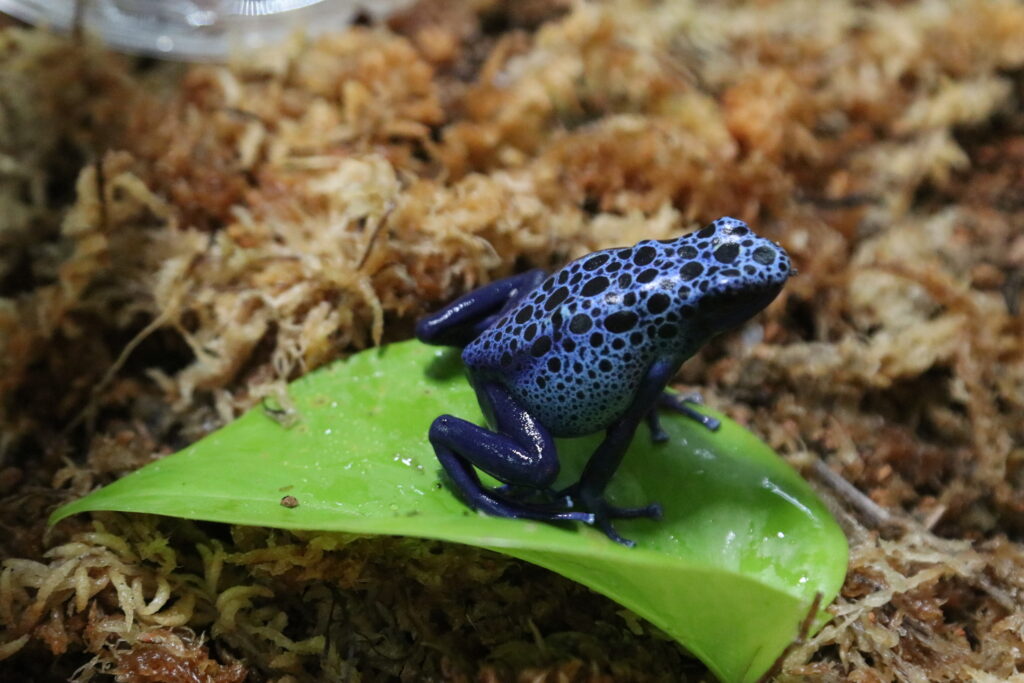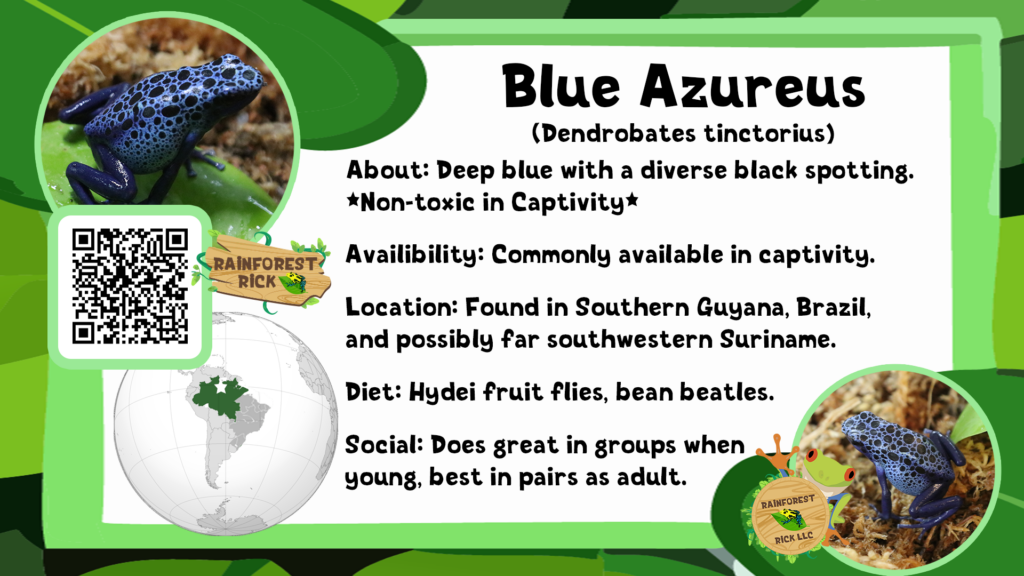Blue Azureus Care Guide

Here’s what works for us as a care guide for Blue Azureus (Dendrobates tinctorius ‘Azureus’):
Special Notes: Intense blue coloration with diverse black spotting. Only discovered to even exist in 1968, and the first imports began in 1970! Sometimes called the Dyeing Poison Dart Frog (based on an early belief that natives used brightly colored frogs to dye fabric). If they eat fire ants and certain beetles in the wild, their skin becomes poisonous! However, this poison is all diet-based. In captivity they are completely non-toxic and harmless.
Great beginner frog: They are relatively easy to care for, making them suitable for beginners. Diurnal, meaning they are awake during the day and sleep at night. They may be kept as groups when young but are best kept as pairs or as a group containing a single female as adults (~ 12 months of age).
Bold: They are known for their bold and active behavior, making them interesting to observe.
Easy to breed: With proper care and setup, they can breed readily in captivity. Best kept as pairs as adults, as adult females may fight with each other in the presence of a male and may eat each other’s eggs!
“Silent” call: Adult males produce a call during the day, but it can barely be heard by humans. They are quiet at night.
Size: Adults can grow up to around 2 inches for females and 1.5 inches for males.
Housing: standard vivarium setup.
Vivarium Size: Like many dart frogs, a general rule of thumb is 5-10 gallons per adult frog. A 10-gallon tank is better for a single adult frog, and larger tanks like a 29-gallon or 24x18x18 vivarium are recommended for 1-3 frogs to provide ample space.
Temperature: They prefer temperatures in the low to mid 70s Fahrenheit, with a range of 65 to 80 degrees. Temperatures over 80 can be dangerous.
Humidity: They require high humidity levels, ideally between 70-100%. They can tolerate lower humidity down to 50% for short periods with access to a shallow dish of water.
Feeding: They eat flightless melanogaster fruit flies when young and can consume the larger hydei fruit flies and bean beetles when adults. These should be dusted with a calcium-vitamin supplement such as Repashy Calcium Plus. (Per adult: ~20 hydei fruit flies every 2-3 days). A banana slice in the vivarium makes for a great feeding station and helps keep the fruit flies in one area.
Sexing: Maturity is reached at 10-12 months of age. Males tend to be smaller than females and tend to have wider front toe pads and a less defined back arch than females. Females may be slightly larger and may be more “pear-shaped” when mature.
Social Behavior: They can be kept in groups when young, and as pairs as adults, or a single female with males.
Age: Capable of living more than 20 years in captivity under ideal conditions, a lifespan of 10-15 years is more common.
Handling: Poison Dart Frogs should not be handled except when they are being moved to or from a vivarium. Handling more than that may cause a seizure and sometimes death!

